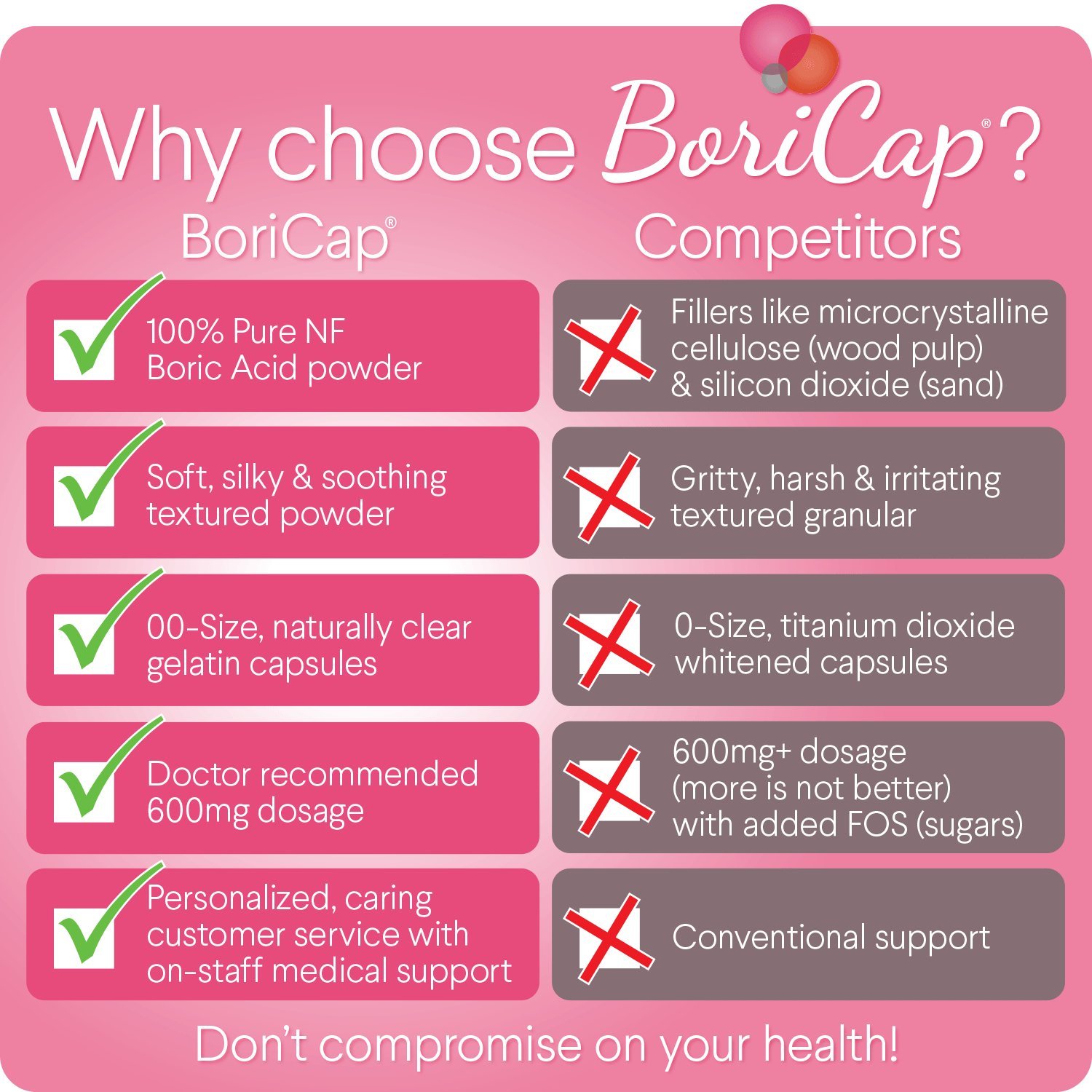How to Cure a Yeast Infection That Won’t Go Away?
Some yeast infections are very difficult to treat, they convert into chronic yeast infections and they seriously affect your quality of life. It may be difficult to treat a yeast infection for a number of reasons which I’ll discuss in this article. But first of all, let me tell you about a treatment that is bound to cure even a stubborn yeast infection that won’t go away with conventional OTC medications.

Have You Heard About Using Boric Acid for Yeast Infection?
Boric acid has become an increasingly popular yeast infection in recent years. For many women suffering from chronic yeast infections, it turned out to be a real life-saver. Studies show that boric acid:
- Can kill yeast species that are immune to conventional yeast infection treatments
- Is a pretty safe treatment option as it rarely gives side effects
- It’s also effective in BV and Trichomoniasis treatment
What are the Best Boric Acid Suppositories?
As boric acid suppositories are becoming more and more popular, there is a great selection of these products on the market. Take a look at the list of my favorite boric acid suppositories:
BoriCap
BoriCap is one of the first brands that launched boric acid suppositories. They use only pharmaceutical grade boric acid powder and their suppositories are manufactured in a Food and Drug Administration (FDA)-certified facility.
Count: 30
Ingredients: 600mg pharmaceutical grade boric acid powder in size 00 gelatin capsules (free from titanium dioxide!)

NutraBlast Boric Life Boric Acid Vaginal Suppositories
NutraBlast offers a range of health supplements for women and boric acid suppositories. Their suppositories also contain only medical grade boric acid and they offer a 60-day full return guarantee if you’re not happy with their product.
Count: 30
Ingredients: Boric acid powder (600 mg) and Gelatin capsules

How to Use Boric Acid Suppositories?
For best results, insert one suppository before going to bed, every night for 14 consecutive days. You can insert it using your finger or a suppository applicator. Don’t forget to use a panty liner as it may leak out during the night.
Make sure you abstain from sexual activities during your treatment.
If you often get yeast infections, keep using one suppository a week for up to six months after you finish your treatment. It’s called maintenance treatment and it will help you nip the infection in the bud before you develop any yeast infection symptoms.
Why is my Yeast Infection so Difficult to Treat?
There are many reasons why you may struggle to get rid of yeast infection. Some of the most common ones are:
- It could be a different type of infection. Up to 75% of women who try to self-diagnose confuse yeast infection symptoms with BV or an STD. In order to be absolutely sure that it’s a yeast infection, you need to get tested. The easiest way is to order a vaginal health test which will provide lab-tested results within 48 hours. The test kit is sent in an unmarked envelope and it’s very easy to use. After you send it back in an attached prepaid envelope, you receive your results online along with a free medical consultation.
- Yeast infections are usually caused by a Candida strain called Candida albicans. This strain is usually pretty easy to treat with common OTC medications, such as Monistat, but sometimes it can become immune to conventional treatment. In some cases, a yeast infection can be caused by other Candida strains, such as Candida glabrata or Candida parapsilosis, which are also difficult to treat. In these cases, boric acid is a very effective treatment option.
- If you’ve got a yeast infection you should strictly avoid bubble baths, using harsh soaps on your vaginal area, using swimming pools and jacuzzis. These things can alter your vaginal pH making your recovery virtually impossible. Check my article about preventing vaginal yeast infections to find out what other things you should avoid.

Conclusion
If you think you’ll never recover from a yeast infection, remember, there’s always a solution. Boric acid suppositories and a few lifestyle changes will help you cure a yeast infection that won’t go away.
If you want to learn about other alternative treatments for a yeast infection, be sure to check my article about making coconut oil suppositories with essential oils. Although they’re not as effective as boric acid, they will give you a much-needed relief while you’re waiting for your boric acid suppositories delivery.
Have you ever used boric acid suppositories? Did they help? Share your experiences and questions in the comment section below.
